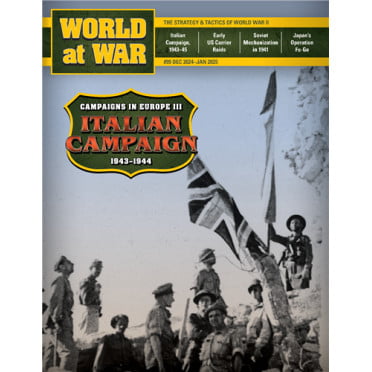World at War 99 - Italian Campaign
DCGWW99
Red price
- English
- From 14 years old
Italian Campaign, 1943–45 On 4 June 1944, the US Army entered Rome, making it the first Axis capital to fall. What followed was an advance in which the Allies expected to sweep into and beyond northern Italy. However, the Germans fought a skillful delaying action, finally capitulating only on 29 April 1945. Here is our analysis of the Allies’ strategic failure.
Articles
US Carrier Raids Early in 1942 After the attack on Pearl Harbor, the US Navy’s commander in the Pacific, Adm. Chester Nimitz, had one advantage: the Japanese codes had been broken. However, he did not have the eight battleships prewar planners had assumed would be available for the counteroffensive. All he had were a handful of aircraft carriers, cruisers and destroyers. This is how he used them.
Soviet Mechanization in 1941 On the day the Germans invaded the USSR, the Red Army’s mechanized order of battle was immense, with 61 tank and 31 motorized rifle divisions. That amounted to some 9,000 tanks along with roughly 5,000 armored cars. Despite those impressive numbers, the Soviet armored force was plagued with serious weaknesses. Here is our analysis.
Japan’s Operation Fu-Go The US air strike on Tokyo in April 1942 caused little damage but embarrassed the Japanese military high command by demonstrating the Home Islands were vulnerable to attack. Operation Fu-Go (Windship Weapon) was therefore developed by September 1942. It was a way for the Japanese to strike at the US homeland, if only to show their own people America was similarly vulnerable to attack.
Copyright © 2025 www.philibertnet.com Legals - Privacy Policy - Cookie Preferences - Sitemap





